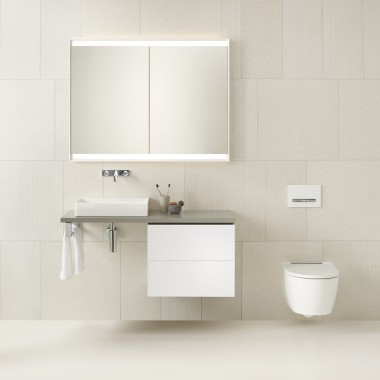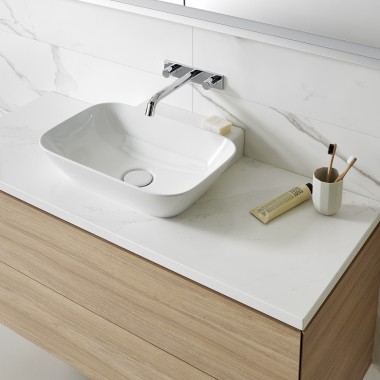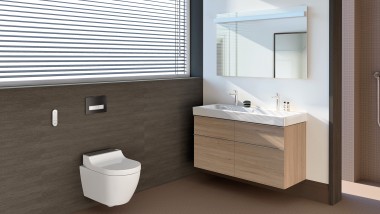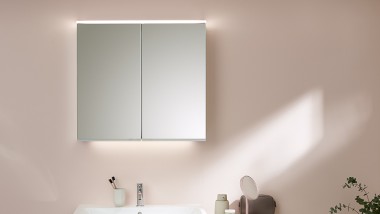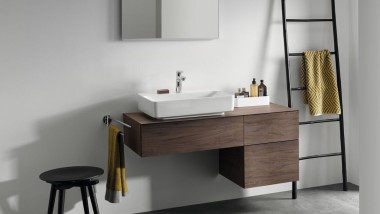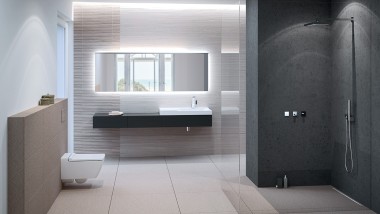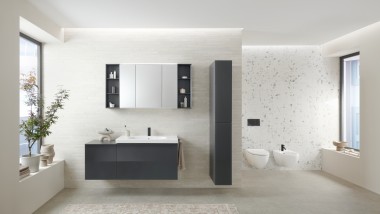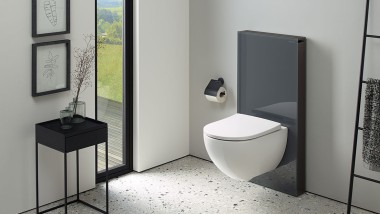Timeless bathroom in whiteWhat you need to know
The colour white has become an integral part of the bathroom. Although today there is a wide range of coloured bathroom furniture and bathroom ceramics, there is still very much a place for the classic look. Take a look at the ideas and tips here.
1. Why you should have a bathroom in white
2. The different shades of white
3. The effect of light in a white bathroom
The expert’s conclusion
“Designing a tone-in-tone bathroom in which all items feature the same white is difficult,” says colour and material expert Martin Rohrer from Geberit. He recommends: “The best choice is to buy your ceramic appliances from a single manufacturer or from one and the same bathroom series – this is how you can avoid the washbasin and the toilet, for example, having different colours – and play with contrasts. Combine wooden furniture or different coloured furniture with white ceramic appliances. But if you want to design as much as possible in classic white, you can work with colourful accessories such as bathroom textiles to give the bathroom more colour.” This means you stay flexible when confronted with new trends or changes in style.
